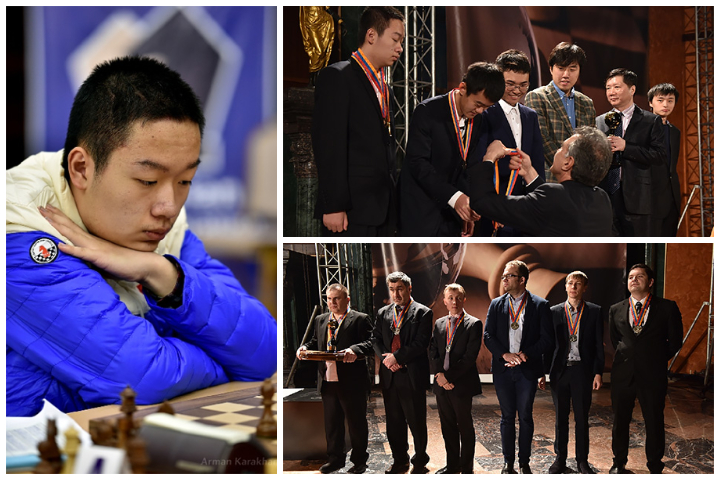


The years 2014 and 2015 saw China winning gold medals for the first time at the Chess Olympiad and the World Team Championship, respectively. After grabbing Olympic gold in Tromso, the Chinese lined up three out of the five same representatives who had played in Norway to win the World Teams’ event in Tsaghkadzor — Ding Liren, Yu Yangyi and Wei Yi. Eight years later, the trio still occupies 3 out of the 4 top spots in the national ranking.
China was the only team to finish the tournament undefeated, with 6 wins and 3 draws in the single round-robin. Ding, aged 22 at the time, scored 5½/9, with wins over Sam Shankland and Bassem Amin to his name. Meanwhile, the strongest player in the tournament was Wei Yi, aged 15 at the time — the youngster collected 7/9 points and had a 2846 TPR.
Ukraine and Armenia finished second and third, respectively. Vasyl Ivanchuk, playing on board 2 behind Ruslan Ponomariov, was the strongest Ukrainian, although a loss in round 8 against Sam Shankland cost his team the match against the USA. The Armenians had their best representative in Levon Aronian, who collected 6/9 points on the top board, with wins over Ponomariov, Viktor Erdos and Samy Shoker.
As was customary around that time, Russia was the clear favourite. In this case, at 2760, the Russian squad had an average rating 41 points higher than second-seeded Ukraine. Russia finished tied for fourth with the USA, a match point behind the Armenians.
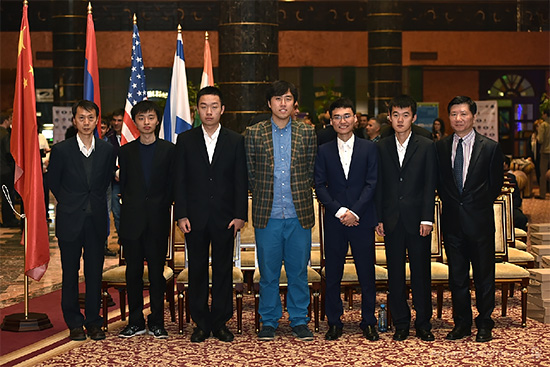
The proud Chinese team | Photo: Arman Karakhanyan
Tsaghkadzor, which literally means “Valley of Flowers”, is a spa town and a popular health resort in Armenia, located north of the capital Yerevan in the Kotayk Province (marz).
It may be a small, touristy town, but has a rich and convoluted history. The area was first settled during the third century and belonged to a noble family who governed the forests and lands. These were used as a hunting ground for the Armenian kings of the Arsacid dynasty. During the later centuries, the region was turned into a frequent battlefield between the Ottomans and Persians. After the Treaty of Turkmenchay of 1828, Tsaghkadzor and the surrounding areas became part of the Erivan Governorate within the Russian Empire.
Today the town’s infrastructure centres around tourism, with many luxurious hotels, resorts and amusement facilities available to visitors. Below is the venue of the World Team Championship 2015, the five-star hotel Golden Palace Tsakhkadzor Hotel.
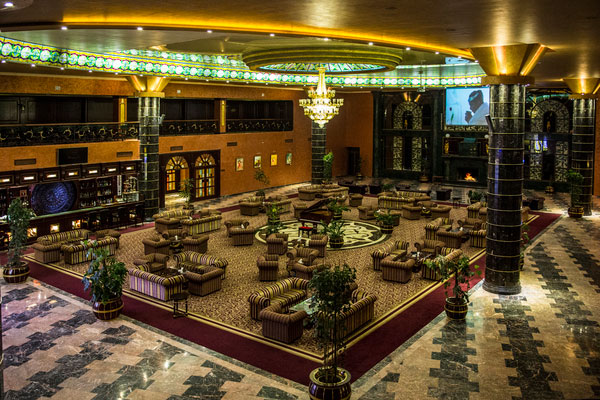
All team members got single rooms could lounge in this 1650 sq.m. lobby...
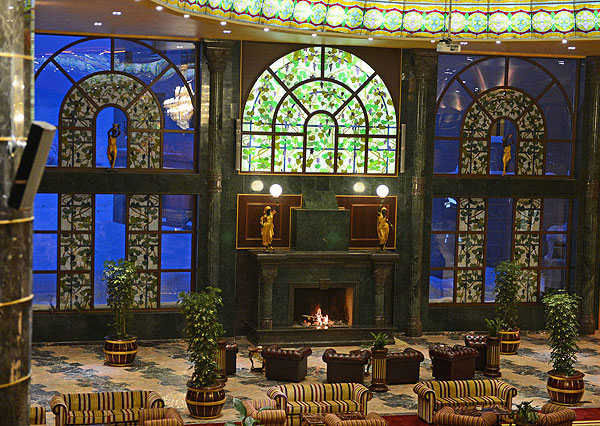
...and enjoy Armenian wine in front of a truly spectacular fireplace
Who could have imagined that a team with the highest average Elo by far, and having won more gold medals at the Chess Olympiad than any other nation, would start with a staggering 0-2? Yet that is exactly what happened, followed in suit by Team USA. It is true that Russia had failed to take any spot on the podium in Norway 2014, but for all onlookers and pundits, it was a fluke nothing more. If that was a fluke, then what to make of this disastrous start? It is hard to explain: statistical blip, coincidence, disinterest... Who can say?
If Russia had a bad start, the US was not much better, though in their defense their lineup was the second lowest rated, ahead only of Egypt, so anything above would be a windfall. Ultimately, a solid result by top board Sam Shankland, with above-average results by the team, most notably Aleksandr Lenderman who won his last four games, with a 2818 performance.
While the top teams were slow out of the gates, both Israel and Cuba had strong starts taking the early lead, but they could not keep up the momentum and other nations were able to overcome their hesitant beginning to make up the lost ground. The new leaders came in the guise of Ukraine and China, who soon fought every round toe-to-toe, while distancing themselves from their rivals.
It all came down to the last two rounds, when Ukraine unexpectedly lost to the USA, while China beat Cuba handily. The final round saw Ukraine only draw against Hungary as China trounced India by 3-1.
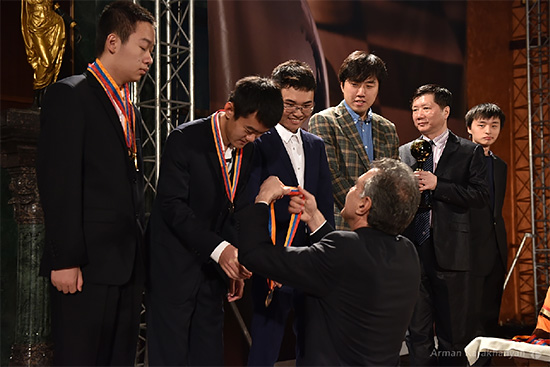
The Chinese team receives its deserving medals | Photo: Arman Karakhanyan

The silver medal-winning Ukrainian squad | Photo: Arman Karakhanyan
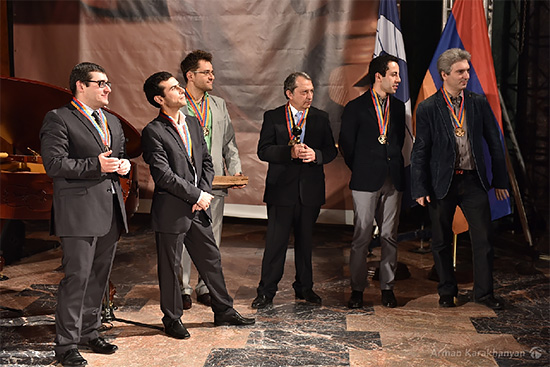
Armenia managed to grab the bronze over the many challengers | Photo: Arman Karakhanyan
| Rk. | Team | TB1 | TB2 | |
| 1 | China | 15 | 23 | |
| 2 | Ukraine | 12 | 21 | |
| 3 | Armenia | 11 | 18 | |
| 4 | Russia | 10 | 20,5 | |
| 5 | USA | 10 | 19,5 | |
| 6 | Hungary | 9 | 17 | |
| 7 | Israel | 8 | 18,5 | |
| 8 | Cuba | 7 | 16,5 | |
| 9 | India | 7 | 16 | |
| 10 | Egypt | 1 | 10 |
Full technical information on Chess-Results
| Advertising |